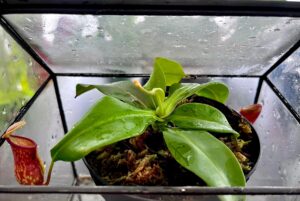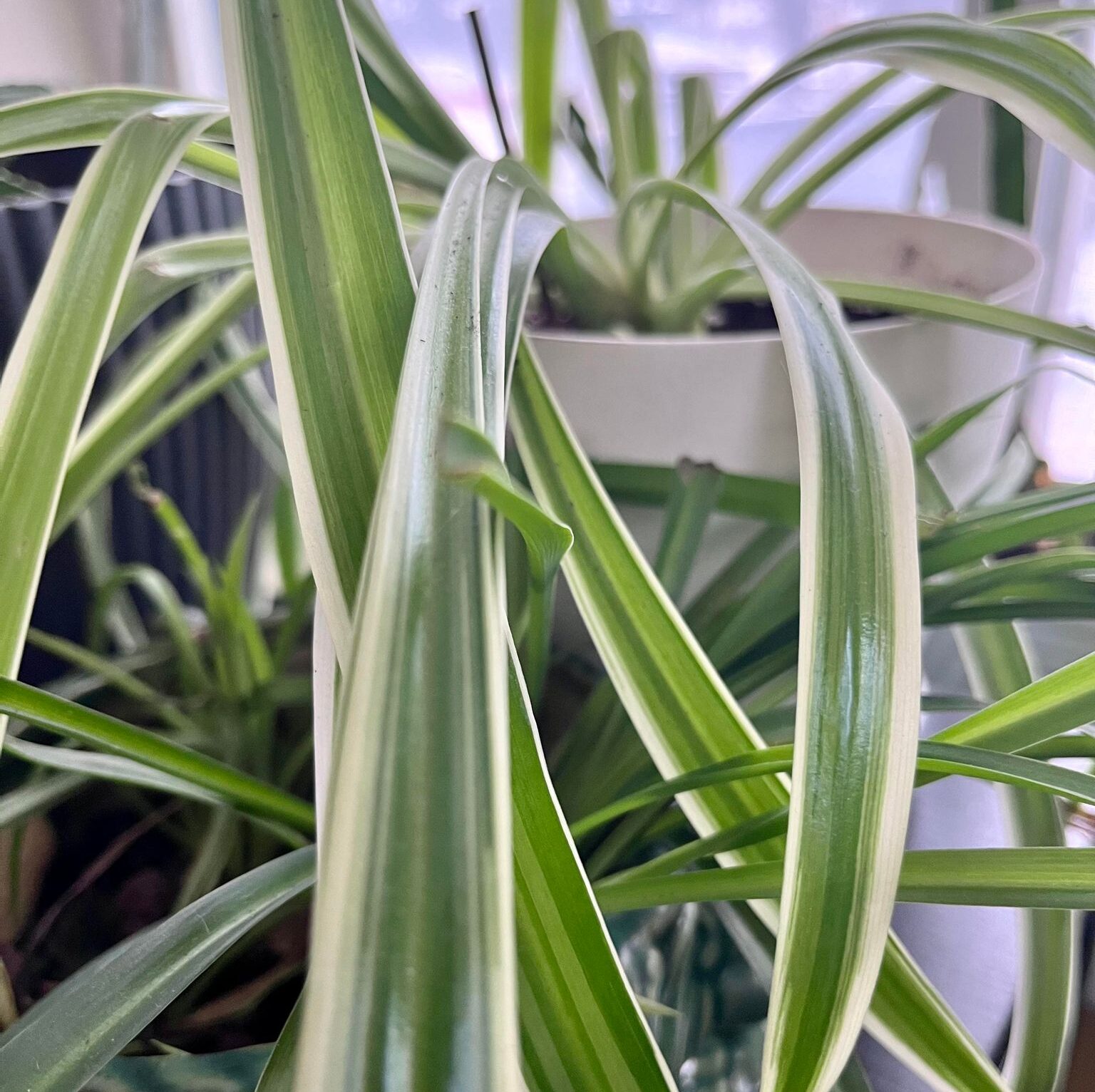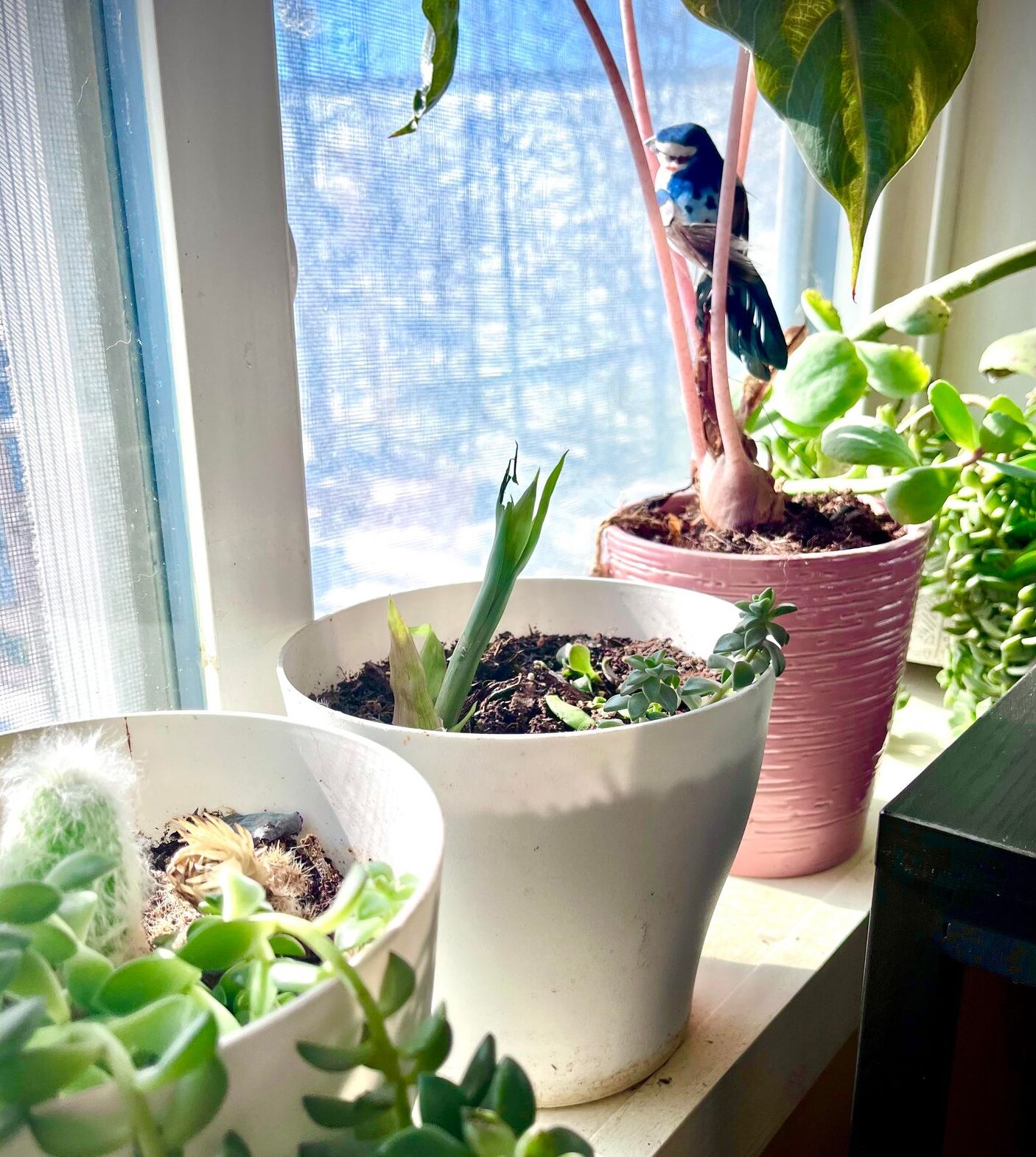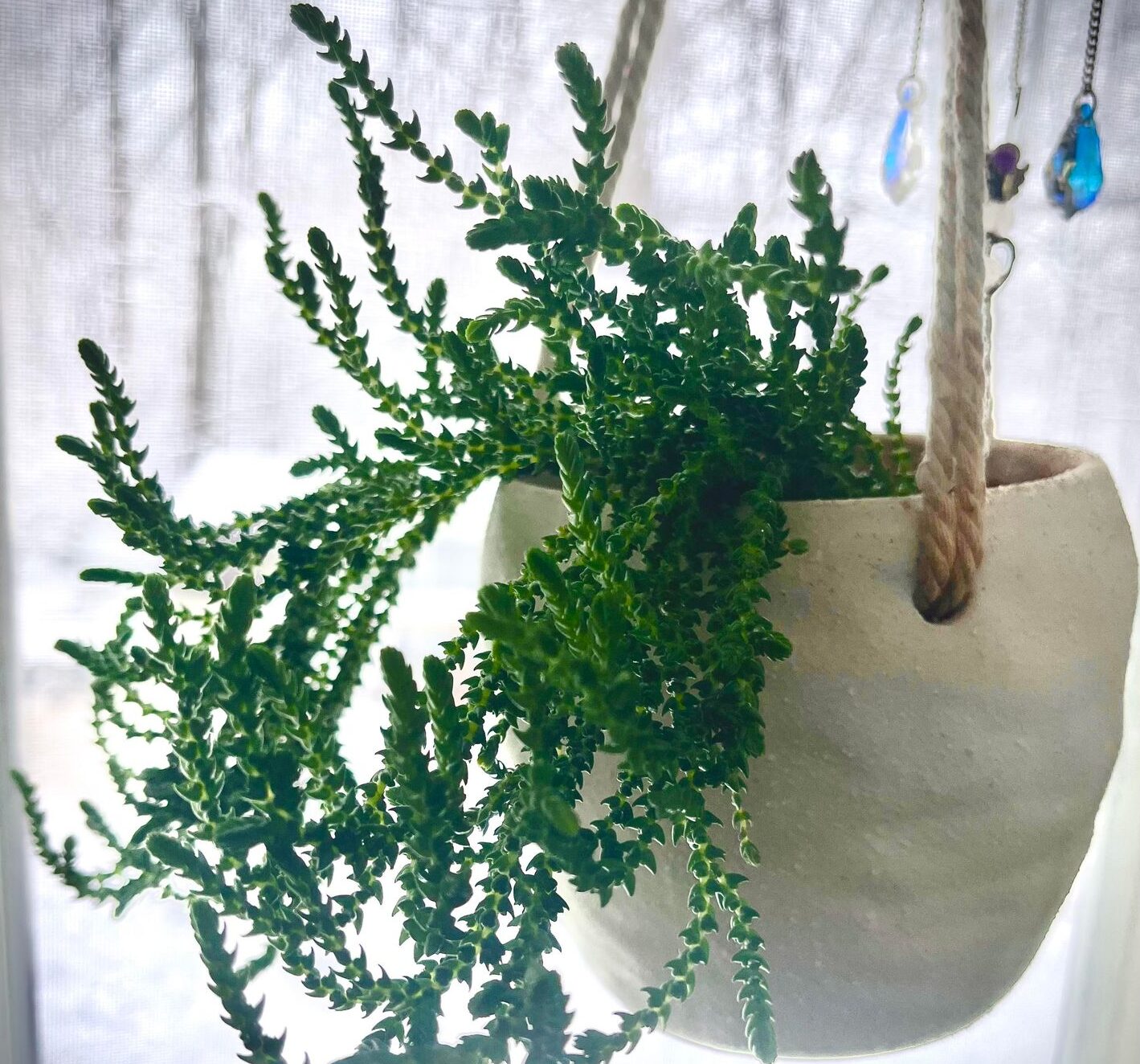
Carnivero Tropical Pitcher Plant – Nepenthes Gaya Care and Propagation Guide

Nepenthes Gaya Care and Propagation Guide
Welcome, fellow plant enthusiasts, to the lush world of indoor gardening, where each leaf tells a unique story of resilience and growth. If you’ve ever been captivated by the mysterious charm of indoor plants, you’re in for a treat. Today, we embark on a green adventure, exploring the captivating realm of the Carnivero Tropical Pitcher Plant, more commonly known as Nepenthes Gaya.
In the heart of our homes, these botanical wonders thrive, offering a touch of nature’s beauty within our indoor spaces. Join me as we unravel the secrets behind caring for and propagating the extraordinary Carnivero Tropical Pitcher Plant. Whether you’re a seasoned plant parent or just starting your green journey, there’s always room for one more leafy companion.
Get ready to discover the fascinating world of Nepenthes Gaya, where every leaf is a canvas, painted with the artistry of nature. As we delve into the care and propagation guide, you’ll find that cultivating these carnivorous wonders is not just a hobby—it’s an immersive experience that connects us with the wonders of the plant kingdom. So, let the adventure begin, and let the beauty of indoor gardening unfold before your very eyes!
Getting to Know Nepenthes Gaya
If you’ve ever dreamed of bringing a touch of the tropics into your living space, the Carnivero Tropical Pitcher Plant, scientifically known as Nepenthes Gaya, is here to make that dream a reality. Let’s dive into the enchanting world of this carnivorous beauty.
Origin and Background: Nepenthes Gaya, hailing from the lush tropical regions, is a testament to the wonders of nature. Originating in Southeast Asia, these carnivorous plants have adapted to thrive in diverse environments, making them well-suited for indoor cultivation. The name “Gaya” pays homage to its unique and captivating characteristics.
Striking Features: What sets Carnivero Tropical Pitcher Plant apart is its distinctive pitcher-shaped traps that lure and capture unsuspecting prey. These pitchers, hanging delicately from the plant, are both functional and ornamental. The vibrant colors and intricate patterns on the pitchers add an artistic flair to any indoor garden.
Natural Habitat and Conditions: To truly understand and care for Nepenthes Gaya, it’s essential to grasp its natural habitat. In the wild, these plants flourish in humid, tropical climates, often found in the dappled sunlight of rainforests. Replicating these conditions in your indoor space will create the perfect haven for your Carnivero to thrive.
As you embark on this botanical journey, keep in mind that Nepenthes Gaya is more than just a plant—it’s a living piece of art, a marvel of evolution that invites you to witness the wonders of the plant kingdom up close. In the following sections, we’ll explore how to recreate the ideal environment for this remarkable plant, ensuring its health and vitality in your indoor oasis. So, let’s bring a piece of the tropics into our homes and embrace the beauty of Carnivero Tropical Pitcher Plant cultivation.
Creating the Perfect Environment
Now that we’ve acquainted ourselves with the allure of Nepenthes Gaya, it’s time to roll up our sleeves and create the optimal environment for these tropical wonders to thrive. Just like any masterful gardener, providing the perfect conditions is key to cultivating healthy and vibrant Carnivero Tropical Pitcher Plants.
Setting up a Tropical Haven: Creating a tropical haven within your living space may sound like a complex task, but fear not – it’s more achievable than you might think. Start by placing your Carnivero in an area with bright, indirect sunlight. Mimic the filtered light found in its native rainforest habitat to ensure your plant receives the energy it needs without the risk of scorching.
Selecting the Right Soil Mix: Pitcher plant cultivation begins with the soil. Opt for a well-draining, nutrient-poor mix that replicates the conditions of the forest floor. A mix of sphagnum moss, perlite, and orchid bark creates an environment that promotes healthy root development and mimics the natural setting of Nepenthes Gaya.
Diversity in Nepenthes Species: While our focus is on Nepenthes Gaya, exploring other Nepenthes species can add diversity to your indoor garden. Each species may have unique characteristics and care requirements. Consider introducing a variety of Nepenthes to create a captivating collection that showcases the beauty of these carnivorous plants.
As you embark on this horticultural journey, remember that creating a tropical paradise for your Carnivero is not only about tending to a plant but about curating an immersive experience within your home. In the next section, we’ll delve into the specific care tips that will keep your Nepenthes Gaya healthy and flourishing. So, let’s transform your living space into a haven for tropical plant care, where the beauty of Carnivero Tropical Pitcher Plants takes center stage.
Nurturing Your Carnivero

Now that your Carnivero Tropical Pitcher Plant has found its place in your indoor paradise, it’s time to delve into the nurturing aspect of this captivating species. Discover the care tips that will not only maintain the health of your Nepenthes Gaya but also unlock its true potential as a stunning addition to your botanical haven.
Carnivero Care Tips
Caring for Carnivero plants requires a blend of attention to detail and an understanding of their unique needs. Keep the soil consistently moist, ensuring it never dries out completely. Water your Nepenthes Gaya with purified water or rainwater to avoid minerals that might harm the sensitive roots. Maintain a humidity level of around 50-60% to mimic the tropical conditions these plants adore.
Nepenthes Gaya Characteristics
To truly appreciate and care for your Carnivero, let’s explore the distinctive characteristics of Nepenthes Gaya. The vibrant colors and intricate patterns on its pitcher-shaped traps serve a dual purpose – enticing prey and creating a visually striking display. Observe the plant closely, and you’ll witness the elegance of nature unfolding within your living space.
Pitcher Plant Maintenance
Regular maintenance ensures your Carnivero remains a flourishing centerpiece in your indoor garden. Trim away any dried or yellowing leaves, allowing the plant to channel its energy into new growth. Keep an eye on the pitchers; if they become brown or damaged, gently trim them to maintain the plant’s aesthetic appeal.
Nurturing your Carnivero is a gratifying experience that goes beyond simple plant care. It’s a connection to the wonders of the natural world, unfolding within the comfort of your home. As we continue our exploration, we’ll uncover the secrets of propagating Nepenthes Gaya, allowing you to expand your indoor garden and share the joy of these captivating carnivorous plants. So, let’s embark on the next phase of our botanical journey – propagation magic awaits!
Propagation Magic
Embarking on the journey of propagating Nepenthes Gaya is akin to unlocking the magic within the botanical realm. Propagation not only allows you to expand your indoor garden but also lets you share the beauty of Carnivero Tropical Pitcher Plants with fellow enthusiasts. Let’s delve into the enchanting process of propagation and understand the secrets that lie within the habitat of Nepenthes Gaya.
Guide to Carnivorous Plant Propagation
Propagating Carnivero plants can be a rewarding venture for any plant lover. One common method for Nepenthes Gaya is through stem cuttings. Select a healthy, mature stem with at least one leaf and carefully cut it just below a node. Plant the cutting in a suitable soil mix, keeping it consistently moist. With patience and proper care, you’ll soon witness new growth emerging, creating a new chapter in your Carnivero journey.
Understanding the Natural Habitat
To successfully propagate and care for Nepenthes Gaya, it’s crucial to understand its natural habitat. These plants thrive in the humid, tropical climates of Southeast Asia, often found in the company of other lush vegetation. Recreating these conditions in your propagation area ensures that new plants receive the nurturing environment they need to flourish.
As you immerse yourself in the propagation magic of Carnivero Tropical Pitcher Plants, remember that each new growth is a testament to the interconnectedness of the plant world. In the upcoming sections, we’ll explore essential aspects such as watering and feeding strategies, ensuring that both mature and propagated plants continue to thrive in your botanical haven. So, let the propagation magic unfold, and watch as your indoor garden transforms into a vibrant showcase of Nepenthes Gaya’s beauty.
Watering and Feeding Strategies
Just as every gardener knows, the secret to a thriving indoor garden lies in mastering the art of watering and feeding. When it comes to Carnivero Tropical Pitcher Plants like Nepenthes Gaya, adopting the right strategies ensures not only survival but a spectacular display of nature’s ingenuity. Let’s explore the unique watering needs and feeding strategies that will keep your Carnivero flourishing.
Pitcher Plant Watering
Understanding the watering needs of Nepenthes Gaya is fundamental to its well-being. These carnivorous wonders prefer to be consistently moist but not waterlogged. Aim for a balance by keeping the soil evenly damp, mimicking the conditions found in their native rainforests. Use purified water or rainwater to avoid minerals that may harm the sensitive roots. Remember, the key is moderation – too much water can lead to root rot, while too little can stress the plant.
Carnivorous Plant Feeding
One of the fascinating aspects of Carnivero Tropical Pitcher Plants is their carnivorous nature. While they can derive nutrients from the soil, they also capture and digest prey with their pitcher-shaped traps. While your indoor environment might not offer the same abundance of insects, you can supplement their diet. Feed your Nepenthes Gaya with small, live insects or specialized carnivorous plant fertilizer, providing the essential nutrients for robust growth. This feeding ritual is a captivating demonstration of the plant’s unique adaptation to its surroundings.
By mastering the delicate dance of watering and feeding, you unlock the full potential of your Carnivero. The next section will delve into the soil requirements and potential pests, ensuring that your Nepenthes Gaya continues to thrive in its carefully curated environment.
Soil Requirements and Pests
As we tend to the well-being of our Carnivero Tropical Pitcher Plant, understanding the soil it calls home and safeguarding against potential pests are essential steps in maintaining a thriving indoor garden. In this section, we’ll delve into the specific soil requirements of Nepenthes Gaya and equip you with the knowledge to identify and address any unwelcome guests that may disrupt the harmony of your botanical haven.
Tailoring the Soil Mix for Nepenthes Gaya
Creating the perfect soil mix for your Carnivero is a crucial component of its care. Nepenthes Gaya thrives in a nutrient-poor, well-draining mix that mimics the conditions of its native habitat. A blend of sphagnum moss, perlite, and orchid bark provides the ideal balance, promoting aeration and preventing waterlogging. This specialized mix encourages healthy root development, ensuring your Pitcher Plant is anchored in a supportive environment.
Vigilance Against Pitcher Plant Pests
While Carnivero plants are well-equipped to capture and digest prey, they are not invincible to potential pests. Keep a watchful eye for common issues like aphids, mealybugs, or spider mites. These pests may attempt to take advantage of the inviting environment you’ve created. Swift action is key – address any signs of infestation promptly with organic insecticidal soap or neem oil, ensuring your Nepenthes Gaya remains a pest-free haven.
By attending to the soil requirements and remaining vigilant against potential pests, you establish a robust foundation for the health and vibrancy of your Carnivero. In the next section, we’ll explore the joys of building a diverse Carnivero collection and delve into the unique care tips for various Nepenthes species. So, let’s fortify the soil and stand guard against pests, ensuring your indoor garden remains a sanctuary for Nepenthes Gaya’s beauty.
Building Your Carnivero Collection
As your journey with Carnivero Tropical Pitcher Plants continues, the allure of building a diverse collection beckons. In this section, we’ll explore the joys of expanding your indoor garden with different Carnivero species, focusing on the unique care tips for Nepenthes Gaya and its botanical companions.
The Joy of a Carnivero Plant Collection
Diversity is the spice of life, and the same holds true for your indoor garden. Consider adding various Carnivero species to your collection, each contributing its unique charm to the ensemble. Explore different sizes, shapes, and colors to create a captivating tapestry of carnivorous wonders. Building a Carnivero plant collection not only adds visual interest but also broadens your understanding of these fascinating plants.
Insights into Nepenthes Gaya and Its Companions
While Nepenthes Gaya remains the star of your indoor garden, understanding the care nuances of different Nepenthes species enhances your horticultural expertise. Some species may prefer slightly different conditions, such as varying light levels or humidity. Take the time to acquaint yourself with the individual requirements of each species in your collection, ensuring a tailored approach to their care.
Cultivating a diverse Carnivero collection transforms your indoor space into a botanical gallery, showcasing the rich tapestry of nature’s designs. In our next section, we’ll shed light on the crucial aspects of light, growth stages, and potting mix, offering insights to optimize the conditions for your Carnivero plants.
Light, Growth Stages, and Potting Mix
As your Carnivero collection flourishes, it’s essential to tailor your care routine to the specific needs of each plant. In this section, we’ll explore the crucial aspects of light exposure, growth stages, and selecting the right potting mix, ensuring your Carnivero Tropical Pitcher Plants thrive in their individual glory.
Pitcher Plant Sunlight Needs
Understanding the sunlight requirements of your Carnivero is akin to deciphering the language of plants. Most Nepenthes, including Gaya, thrive in bright, indirect sunlight. Mimic the filtered sunlight of their native rainforests by placing your plants in a location with ample natural light, but shielded from harsh, direct rays. Finding the right balance ensures your Pitcher Plants receive the energy they need without risking sunburn or stress.
Carnivorous Plant Enthusiasts’ Delight
For the true Carnivorous plant enthusiast, the joy lies in the continual learning and adaptation to the unique needs of each specimen. Engage with fellow enthusiasts, share experiences, and seek advice within the vibrant community of plant lovers. The collective wisdom of like-minded individuals can offer valuable insights into cultivating thriving Carnivero collections.
Nepenthes Gaya Growth Stages
Closely observing the growth stages of Nepenthes Gaya unveils the fascinating life cycle of these carnivorous wonders. From the emergence of delicate pitchers to the maturation of robust traps, each stage is a testament to the resilience and adaptability of these plants. Recognizing these growth phases allows you to tailor your care approach, providing the necessary support at every step of the journey.
Pitcher Plant Potting Mix
The choice of potting mix is the foundation of successful Carnivero cultivation. Continue to use a well-draining mix, incorporating materials like sphagnum moss, perlite, and orchid bark. As your Carnivero collection expands, consider customizing the potting mix based on the specific preferences of each Nepenthes species. A well-chosen mix not only supports healthy root development but also facilitates efficient water drainage.
In our next section, we’ll explore the intimate aspects of dormancy, humidity, and substrates, unraveling the intricacies that contribute to the overall well-being of your Carnivero Tropical Pitcher Plants.
Dormancy, Humidity, and Substrates
Navigating the nuanced aspects of dormancy, humidity, and substrates is akin to conducting a symphony in the life of your Carnivero Tropical Pitcher Plants. In this section, we’ll delve into the intricacies of these factors, offering insights and tips to maintain the health and vitality of Nepenthes Gaya and its botanical companions.
Carnivero Plant Health Tips
Ensuring the overall health of your Carnivero collection requires a holistic approach. Regularly inspect your plants for any signs of stress, disease, or pests. Promptly address issues such as yellowing leaves, which may indicate a need for adjustments in watering or nutrient levels. Consistent monitoring and proactive care are the cornerstones of a flourishing indoor garden.
Nepenthes Gaya Dormancy
Carnivero Tropical Pitcher Plants, including Nepenthes Gaya, may experience a dormancy period, typically in response to changes in light or temperature. During this phase, growth may slow, and some pitchers might wither. Don’t be alarmed; it’s a natural part of the plant’s life cycle. Adjust watering and feeding during dormancy, allowing your Carnivero to conserve energy for the upcoming growth season.
Pitcher Plant Humidity Levels
Maintaining adequate humidity levels is vital for the well-being of Carnivero plants. Aim for a humidity range of 50-60%, replicating the moist conditions of their native habitats. In drier indoor environments, consider using a humidity tray or a room humidifier to create a microclimate that supports optimal growth. Adequate humidity ensures that your Nepenthes Gaya can efficiently capture prey through its pitcher-shaped traps.
Carnivorous Plant Substrates
The choice of substrates continues to play a pivotal role in the success of your Carnivero cultivation. Experiment with different substrates to find the optimal mix for your Nepenthes Gaya and other species in your collection. Sphagnum moss, perlite, and orchid bark remain popular choices, but consider fine-tuning the ratio based on the unique preferences of each plant. A well-chosen substrate fosters healthy root development and contributes to the overall resilience of your Carnivero.
As we conclude our exploration of dormancy, humidity, and substrates, the final section will unravel the unique features of Nepenthes Gaya and provide insights into the art of fertilization.
Unique Features and Fertilization
In the final chapter of our Carnivero journey, we unravel the distinctive features that make Nepenthes Gaya a captivating masterpiece in the world of indoor gardening. Additionally, we explore the art of fertilization, offering insights to nourish your Carnivero Tropical Pitcher Plants and witness their unique beauty flourish.
Nepenthes Gaya’s Unique Features
Pause for a moment and marvel at the unique features that set Nepenthes Gaya apart. The pitcher-shaped traps, adorned with vibrant hues and intricate patterns, are not merely functional; they are works of art crafted by nature. These features not only attract prey but also contribute to the overall aesthetic appeal of your indoor garden. Observing the unique characteristics of Nepenthes Gaya adds a layer of appreciation to the artistry ingrained in each leaf.
The Art of Fertilization
Fertilization is the final brushstroke in the masterpiece of Carnivero care. While these plants are adept at capturing and digesting prey, providing additional nutrients can enhance their overall vitality. Opt for a specialized carnivorous plant fertilizer, diluted to half the recommended strength, and apply it sparingly during the growing season. Strike a balance – too much fertilizer can harm your Carnivero, while a well-timed and measured approach ensures robust growth.
As we conclude our Carnivero Tropical Pitcher Plant – Nepenthes Gaya Care and Propagation Guide, reflect on the incredible journey you’ve embarked upon. From creating the perfect environment to nurturing, propagating, and expanding your collection, each step has been a celebration of the unique wonders these carnivorous plants bring to your indoor space.
Recommended Products for Your Carnivero Tropical Pitcher Plants
- Espoma Organic Orchid Mix
- Create the perfect substrate for your Nepenthes Gaya with Espoma Organic Orchid Mix. This well-draining and nutrient-rich mix, composed of sphagnum moss, perlite, and fir bark, provides an optimal environment for healthy root development. Your Carnivero will thrive in this thoughtfully crafted blend.
- Humidifier for Indoor Plants
- Maintain the ideal humidity levels for your Carnivero with a dedicated humidifier. The Honeywell HCM350W Germ-Free Cool Mist Humidifier is an excellent choice, offering a quiet and efficient solution to create the moist conditions that mimic the tropical habitat of Nepenthes Gaya.
- Miracle-Gro Water Soluble Orchid Food
- Nourish your Carnivero collection with Miracle-Gro Water Soluble Orchid Food. Specially formulated for orchids and other epiphytic plants, this fertilizer provides essential nutrients during the growing season. Ensure robust growth and vibrant pitchers with this trusted plant food.
- T5 High Output Fluorescent Grow Light
- Enhance the light exposure for your Carnivero Tropical Pitcher Plants with the T5 High Output Grow Light. This fluorescent light fixture provides bright, indirect light, perfect for simulating the filtered sunlight conditions that Nepenthes Gaya thrives in. Ideal for supplementing natural light or as the primary light source.
- Neem Oil Organic Pest Control
- Safeguard your Carnivero against common pests with Neem Oil Organic Pest Control. This natural solution effectively tackles aphids, mealybugs, and spider mites without harming your plants. Ensure a pest-free environment for Nepenthes Gaya and maintain the integrity of your indoor garden.
These recommended products are carefully selected to complement the care and cultivation of Carnivero Tropical Pitcher Plants. Incorporate these tools into your gardening arsenal to create an optimal environment for Nepenthes Gaya and watch your indoor oasis thrive with beauty and vitality.
Conclusion: Embracing the Beauty of Carnivero Tropical Pitcher Plants
In the verdant tapestry of indoor gardening, our exploration of the Carnivero Tropical Pitcher Plant, specifically Nepenthes Gaya, has been a journey filled with wonder and horticultural insights. As we draw the curtain on this care and propagation guide, let’s reflect on the captivating allure of these carnivorous wonders and the fulfillment they bring to our botanical spaces.
From understanding the origin and unique features of Nepenthes Gaya to creating the perfect tropical environment within our homes, each step has been a testament to the harmonious dance between nature and cultivation. Nurturing our Carnivero collection, embracing diversity, and exploring the intricate nuances of dormancy, humidity, and substrates have allowed us to build a thriving indoor haven.
In our quest for knowledge, we’ve ventured into the magical realm of propagation, unveiling the secrets that allow us to multiply the beauty of Nepenthes Gaya. The symphony of watering and feeding, the tailored care for different growth stages, and the mastery of light exposure have collectively contributed to the flourishing health of our Carnivero Tropical Pitcher Plants.
As we conclude, let’s celebrate the unique features that make Nepenthes Gaya a living masterpiece – the captivating pitchers, the vibrant colors, and the artistry inherent in every leaf. The artful touch of fertilization adds the final strokes to our botanical canvas, ensuring our Carnivero stands as a testament to the interconnected dance of life within our homes.
May this guide inspire you to continue your journey as a Carnivorous plant enthusiast, fostering a deep connection with nature in the heart of your living space. Whether you’re a seasoned gardener or just starting, the world of Carnivero Tropical Pitcher Plants invites you to witness the magic of growth, learn from the resilience of these plants, and revel in the ongoing beauty they bring to your indoor oasis.
Here’s to the joy of cultivation, the fascination of discovery, and the enduring beauty of Nepenthes Gaya and its botanical companions. Happy gardening, and may your Carnivero collection continue to thrive, enchanting all who encounter the lush greenery within your home.
Search
Popular Posts
-
Self-Watering Planters: Low-Maintenance Solutions for Busy Plant Parents
Self-Watering Planters In our fast-paced lives, plant enthusiasts, often referred to as “busy plant parents,” grapple with the challenge of providing optimal care to their indoor green companions. The act of watering, a crucial aspect of indoor plant care, becomes a daunting task when time is a luxury. Enter the game-changer: self-watering planters. These innovative…
-
Watch Chain Crassula Muscosa Care and Propagation Guide
Watch Chain Crassula Muscosa Indoor plants bring a special kind of joy to our homes. They add a touch of nature, making our living spaces more peaceful. I love watching each leaf grow and seeing how strong each stem can be. Today, let’s dive into the world of indoor succulents, focusing on a cool one…
Categories
Archives
Tags
air-purifying plants (2) Aloe Vera plant (1) botanical haven (1) busy plant parents (1) Carnivero collection (1) Carnivero Tropical Pitcher Plant (1) carnivorous plants (2) gardening advice (1) gardening tips (3) growing succulents (1) Houseplant care (2) houseplants (3) impact on indoor environments (1) indoor air quality (1) indoor gardening (5) Indoor plant care (3) indoor plant enthusiasts (1) indoor plants (1) indoor succulents (1) low-maintenance solutions (1) maintaining planters (1) nasa's clean air study (1) neon pothos care (1) neon pothos plant (1) Nepenthes care (1) photosynthesis (1) pitcher plant care (1) pitcher plant cultivation (1) plant care (3) planters on amazon (1) plant maintenance (1) plant mechanisms (1) plant parenting (2) plant propagation (4) propagating succulents (1) self-watering planters (1) Succulent care (3) succulent family (1) succulent haven (1) succulent identification (1) succulent tips (1) top-rated products (1) tropical pitcher plant (1) tropical plants (1) watch chain crassula (1)






Leave a Reply